I earn commissions if you shop through the links below at no additional cost to you.
Last Updated on February 5, 2025 by Jeremy
Introduction: The Adventure Begins in the Tracks We Leave Behind
Ever walked through the woods and stumbled across a mysterious set of tracks? Who left them behind? A bear? A wolf? A tiny weasel darting through the underbrush?
Tracking animals in the wild is one of the most rewarding outdoor skills—a way to read nature’s hidden stories and understand the wildlife around you.
I’ve spent years exploring Canada, the U.S., and down through Central America, from park hosting in British Columbia to traveling the Pan-American Highway through Mexico, Guatemala, and Costa Rica. I’ve come across plenty of tracks in the wild, some easy to identify, others that left me scratching my head.
In this guide, we’ll explore 20 of the most common animal tracks, plus where to find them on your next adventure—whether it’s in the forests of the Rockies, the swamps of Florida, or the jungles of Costa Rica.
The Basics of Animal Tracking: What to Look For
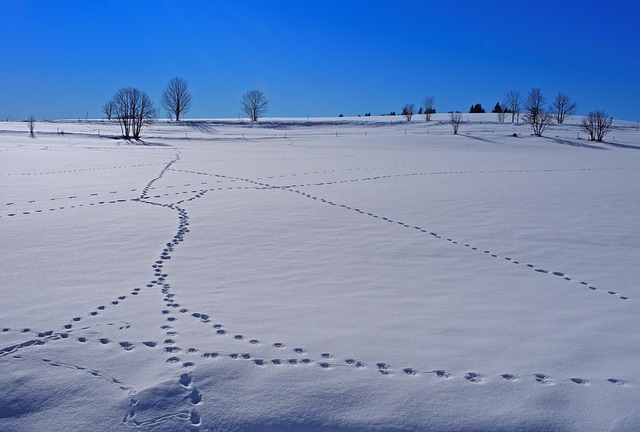
Before diving into specific tracks, here’s what to focus on:
🐾 Number of Toes – Some animals have four toes (coyotes, foxes), five toes (raccoons, bears), or even three (birds).
🐾 Claw Marks – Are they visible? Retractable claws (like cats) won’t always leave marks, while bears, dogs, and raccoons will.
🐾 Track Shape – Is it rounded (bear), oval (wolf), or small and pointed (rabbit)?
🐾 Gait & Stride – How are the tracks spaced? Straight lines mean stalking predators; hopping patterns indicate prey animals.
Tracking isn’t just about recognizing prints—it’s about reading behavior. Let’s break down where to find these tracks in the wild.
Where to Find These 20 Common Animal Tracks in the Wild
1. Deer Tracks – Forest & Meadow Travelers
📍Where to Spot Them:
-
- Great Smoky Mountains National Park (Tennessee/North Carolina) 🏞️
- Banff National Park (Canada) 🦌
🐾How to Identify:
-
- Heart-shaped print with cloven hooves.
- Found in wooded areas and open meadows.

2. Raccoon Tracks – The Nighttime Forager
📍Where to Spot Them:
-
- Everglades National Park (Florida) 🌿
- Pacific Northwest coastal forests 🌲
🐾How to Identify:
-
- Five toes like tiny human hands.
- Often near water sources.
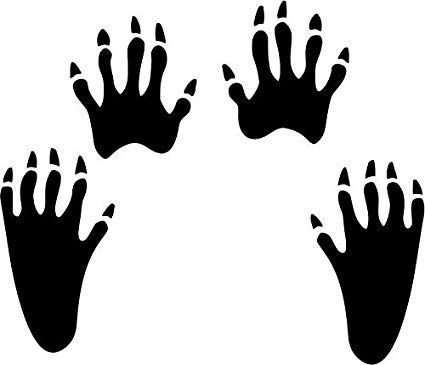
3. Coyote Tracks – The Stealthy Predator
📍Where to Spot Them:
-
- Yellowstone National Park 🐺
- Arizona desert trails 🌵
🐾How to Identify:
-
- Oval-shaped track, similar to a domestic dog.
- Tracks often appear in straight lines (stalking gait).
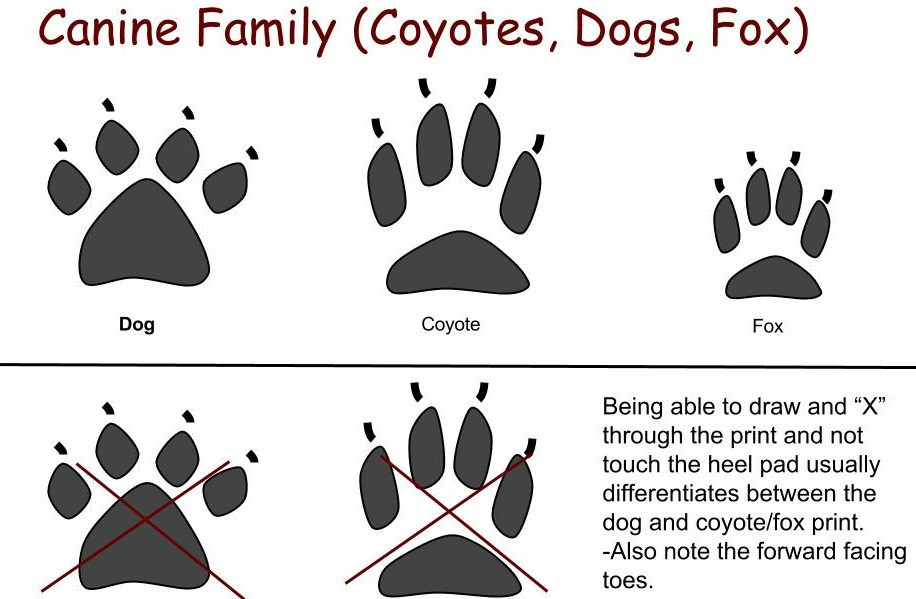
4. Bear Tracks – The King of the Wilderness
📍Where to Spot Them:
-
- Denali National Park (Alaska) 🐻
- British Columbia’s backcountry 🌲
🐾How to Identify:
-
- Huge paw print with five toes and long claws.
- Found near rivers (salmon fishing) or berry patches.
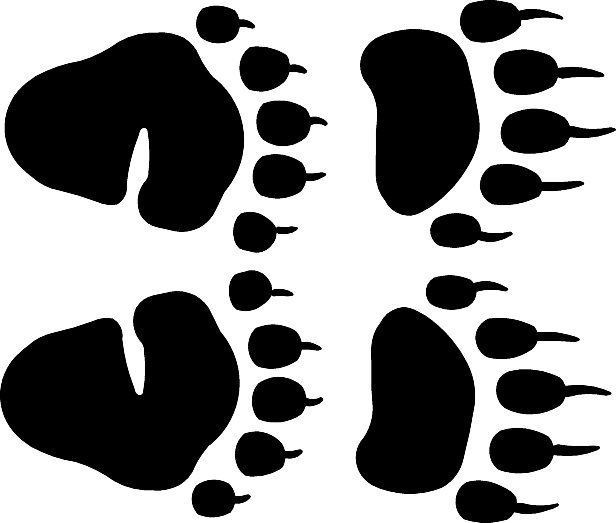
5. Bobcat & Mountain Lion Tracks – The Silent Stalkers
📍Where to Spot Them:
-
- Colorado’s Rocky Mountains 🏔️
- California’s Sierra Nevada 🌲
🐾How to Identify:
-
- Rounded, no claw marks (retractable claws).
- Look for drag marks (a sign they’ve carried prey).
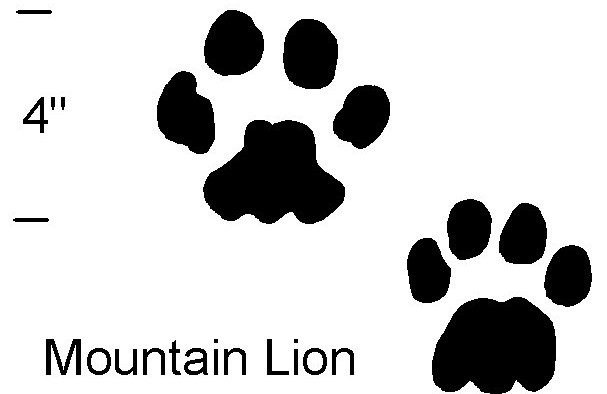
6. Moose Tracks – Giants of the North
📍Where to Spot Them:
-
- Newfoundland & Labrador (Canada) 🦌
- Alaska’s tundra regions ❄️
🐾How to Identify:
-
- Like a deer, but much larger (5-7 inches long).
- Found in swampy areas or dense forests.

7. Fox Tracks – The Clever Traveler
📍 Where to Spot Them:
- Grand Teton National Park (Wyoming) 🏔️
- Boreal forests of Canada 🌲
🐾 How to Identify:
- Small, oval-shaped prints with four toes.
- Claw marks are visible but less pronounced than a coyote.
- Tracks often appear in a straight line (efficient movement).
* See #3 – Coyote Tracks *
8. Rabbit Tracks – The Quick Escape Artist
📍 Where to Spot Them:
- Rocky Mountain National Park (Colorado) 🏞️
- Forested regions of New England 🍁
🐾 How to Identify:
- Hind feet are much larger than front paws (bouncing motion).
- Tracks show a “Y” or “T” shape when they hop through snow or dirt.
- Common in meadows, wooded trails, and snow-covered fields.
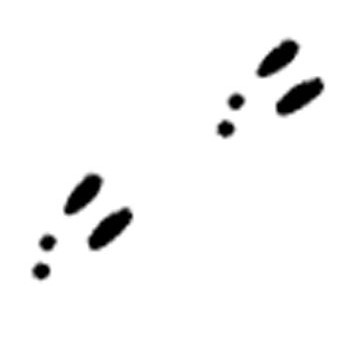
9. Wild Turkey Tracks – The Feathered Forager
📍 Where to Spot Them:
- Great Smoky Mountains National Park (Tennessee/North Carolina) 🦃
- Grasslands and forests of the Midwest 🌾
🐾 How to Identify:
- Three forward-facing toes and one small backward toe (creating an “X” shape).
- Large tracks—up to 4 inches long.
- Found in open fields, near wooded areas, and along dirt roads.
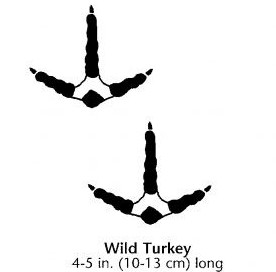
10. Beaver Tracks – The Master Builder
📍 Where to Spot Them:
- Boundary Waters Canoe Area Wilderness (Minnesota) 🛶
- Wetlands of British Columbia 🌿
🐾 How to Identify:
- Webbed hind feet and smaller, clawed front paws.
- Hind tracks are 5-7 inches long, front prints are smaller.
- Often found near water sources, along riverbanks, or dam sites.

11. Otter Tracks – The Playful Swimmer
📍 Where to Spot Them:
- Florida Everglades 🏞️
- Coastal estuaries of Oregon 🌊
🐾 How to Identify:
- Webbed feet, five toes, and claw marks.
- Tracks often show a “slide” mark between prints where otters belly-slide.
- Found near fresh or saltwater habitats.
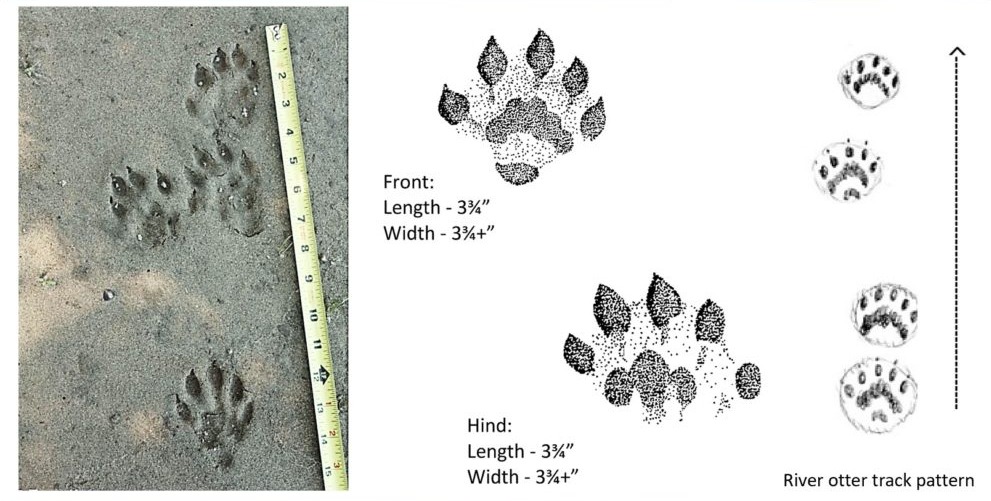
12. Weasel Tracks – The Tiny Hunter
📍 Where to Spot Them:
- Northern forests of Canada 🌲
- Mountainous regions of Montana & Wyoming 🏔️
🐾 How to Identify:
- Small, elongated tracks with five toes and claw imprints.
- Tracks often appear in a bounding pattern (like a mini-otter).
- Found in wooded areas, meadows, and near rodent burrows.

13. Skunk Tracks – The Bold Wanderer
📍 Where to Spot Them:
- Urban parks and suburban forests 🌆
- Rural farmlands and grasslands 🏡
🐾 How to Identify:
- Five toes with long claw marks on the front feet.
- Hind tracks are larger than front tracks (like a bear but much smaller).
- Found near trash bins, gardens, and under porches.
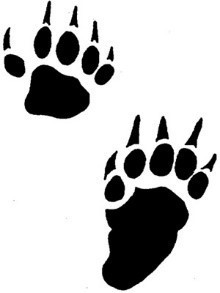
14. Mink Tracks – The Secretive Fisher
📍 Where to Spot Them:
- Wetlands and riverbanks in the Northeastern U.S. 🌿
- Lakeshores in Canada 🇨🇦
🐾 How to Identify:
- Small, webbed footprints (similar to otters but tinier).
- Tracks show bounding movement between prints.
- Found near rivers, ponds, and marshy areas.

15. Bobcat Tracks – The Elusive Predator
📍 Where to Spot Them:
- Sierra Nevada Mountains (California) 🏔️
- Southwestern deserts (Arizona, Texas) 🌵
🐾 How to Identify:
- Round shape, four toes, no claw marks (retractable claws).
- About 2 inches wide—much smaller than a mountain lion.
- Often found in remote forested areas or rocky terrain.
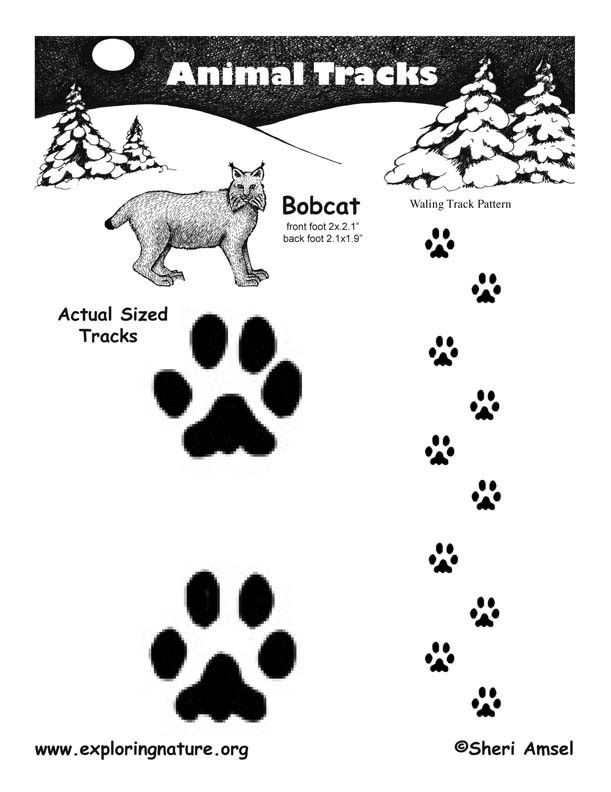
16. Mountain Lion Tracks – The Apex Stalker
📍 Where to Spot Them:
- Rocky Mountain National Park (Colorado) 🏞️
- California’s wilderness reserves 🌲
🐾 How to Identify:
- 4-inch-wide prints with no visible claw marks.
- Tracks are larger and more spaced out than a bobcat’s.
- Found in rugged mountain terrain, canyons, and dense forests.
17. Opossum Tracks – The Nighttime Scavenger
📍 Where to Spot Them:
- Southern U.S. woodlands (Louisiana, Florida) 🌴
- Eastern farmlands and suburban neighborhoods 🏡
🐾 How to Identify:
- Five toes, hind feet have an opposable “thumb.”
- Tracks look like tiny handprints with spread-out fingers.
- Found near water sources, trash bins, and garden areas.
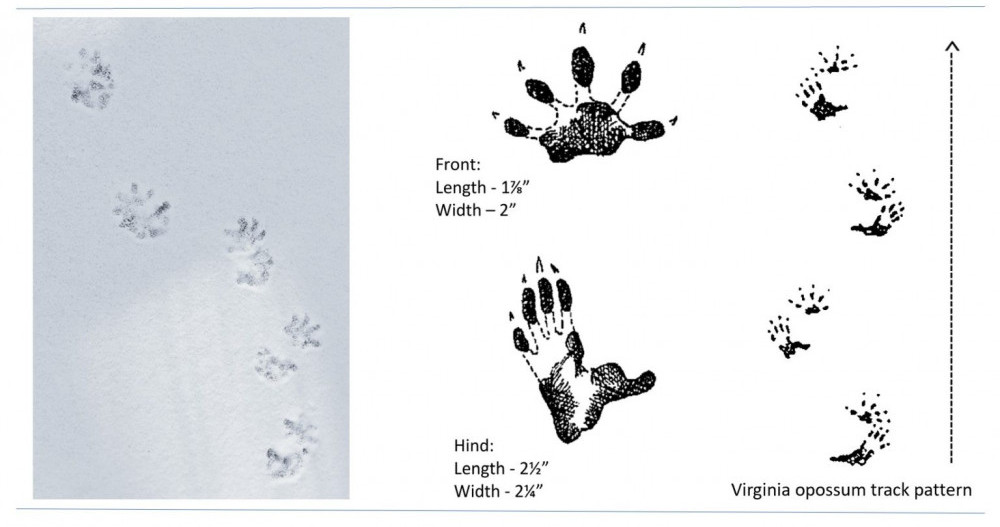
18. Porcupine Tracks – The Slow Climber
📍 Where to Spot Them:
- Dense forests of New England 🌲
- Northern Rockies (Montana, Idaho) 🏞️
🐾 How to Identify:
- Five-toed, rounded tracks with claw marks.
- Often accompanied by drag marks from their quills.
- Found near rocky outcrops, wooded trails, and under logs.
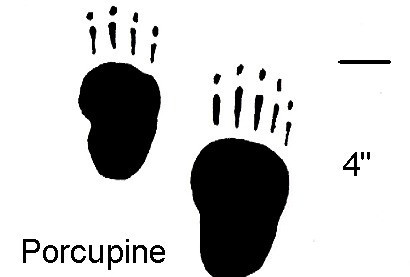
19. Hare Tracks – Built for Speed
📍 Where to Spot Them:
- Arctic tundra (Snowshoe Hare) ❄️
- Western grasslands (Jackrabbit) 🌾
🐾 How to Identify:
- Larger hind feet, small front feet (often form a “T” shape).
- Tracks often appear in pairs due to their leaping gait.
- Found in open fields, meadows, and snowy landscapes.
20. Muskrat Tracks – The Swamp Dweller
📍 Where to Spot Them:
- Florida wetlands 🌿
- Marshes of the Mississippi River 🌊
🐾 How to Identify:
- Four-toed front feet, five-toed hind feet (webbed).
- Often found along muddy shorelines.
- Tracks may show tail drag marks between prints.
Pro Tips for Beginner Trackers
Tracking wildlife isn’t just about spotting a footprint—it’s about understanding how animals move, where they go, and what their tracks reveal. Here are a few expert tips to help you hone your skills in the field:
🔎 1. Check the Terrain – Tracks look different depending on the ground surface:
- Mud: Holds deep, clear imprints—perfect for tracking!
- Sand: Can be tricky since wind erases prints quickly. Look for fresh tracks in the morning.
- Snow: Deep snow may distort prints, but shallow snow reveals crisp details.
📏 2. Carry a Ruler or a Coin for Scale – This helps compare track sizes to guides.
📸 3. Take Photos from Different Angles – A top-down shot AND a side view help with identification later.
👀 4. Follow the Trail, But Keep Your Distance – Tracking predators (like bears, wolves, or mountain lions) can be thrilling, but always stay alert and respect their space.
📖 5. Use a Field Guide or Tracking App – Apps like iNaturalist or Seek help identify unknown prints instantly.
🌍 6. Pay Attention to the Surroundings – Tracks aren’t just about the footprint. Look for:
- Scat (droppings) nearby.
- Claw marks on trees.
- Hair caught in branches or fences.
🦶 7. Know the Difference Between Front & Hind Prints – Many animals (like deer and bears) have different-shaped front and back paws, which can be misleading at first glance.
The Best Destinations for Wildlife Tracking Around the World
If you’re serious about tracking wild animals, these destinations offer unmatched opportunities to observe wildlife in their natural habitats.
1. Yellowstone National Park, USA 🏞️
- Tracks to Spot: Wolves, bears, elk, bison.
- Why Go? One of the best places in the world to track predators in the wild.
2. Denali National Park, Alaska ❄️
- Tracks to Spot: Grizzly bears, moose, lynx.
- Why Go? Huge stretches of untouched wilderness make this a tracker’s paradise.
3. Costa Rican Rainforests 🌿
- Tracks to Spot: Jaguars, tapirs, coatis, monkeys.
- Why Go? Tropical wildlife tracking is an entirely different experience from temperate regions.
4. The Canadian Rockies 🏔️
- Tracks to Spot: Mountain lions, wolves, big-horned sheep.
- Why Go? Remote trails mean fresh tracks and fewer people.
5. Serengeti National Park, Tanzania 🦁
- Tracks to Spot: Lions, leopards, elephants.
- Why Go? Africa’s Big Five roam freely—this is tracking on a grand scale.
6. Patagonia, Argentina & Chile 🏔️
- Tracks to Spot: Pumas, guanacos, condors.
- Why Go? Stunning landscapes combined with rare big cat sightings.
📌 Want to experience tracking in action?
- Viator offers guided wildlife tracking tours in these locations!
- Expedia can help you book eco-lodges & safaris.
Gear & Resources for Tracking Like a Pro
A good tracker relies on sharp observation skills—but having the right gear helps too. Here’s what to pack for your next tracking adventure:
📚 1. A Quality Field Guide
- Best Overall: Peterson Field Guide to Animal Tracks (Amazon)
- Best for North America: Mammal Tracks & Sign by Mark Elbroch (Amazon)
📱 2. Animal Tracking Apps
- iNaturalist – Upload photos, get instant track IDs.
- Seek by iNaturalist – Great for beginners.
📷 3. A Small Notebook & Camera
- Keep track of your findings.
- A camera helps compare prints to known track guides.
🦶 4. Track Casting Kit (Plaster of Paris)
- Take a permanent mold of animal tracks to study later.
🔦 5. A Flashlight or Headlamp
- Tracks are easier to spot in early morning & late evening.
🥾 6. Waterproof Boots & Layered Clothing
- Expect mud, water, or snow while tracking.
📌 Ready to gear up?
Final Thoughts: Take Your Tracking Skills to the Next Level
Learning to identify wild animal tracks is more than just a cool skill—it’s a gateway into the secret world of wildlife. Every print tells a story, and knowing how to read those signs makes every outdoor adventure richer and more meaningful.
🔥 Your Next Steps:
✅ Book a guided wildlife tracking experience through Viator.
✅ Plan a stay at a remote eco-lodge (Expedia).
✅ Grab a top-rated tracking field guide.
Tracking isn’t just about what you see—it’s about what you discover.
So, where will your next trail lead?

Leave a Reply